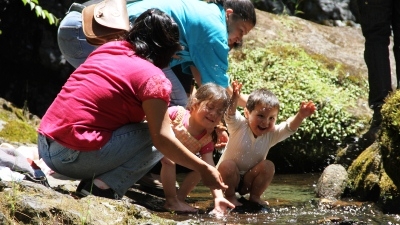Challenge
By achieving near-universal coverage among pre-school children aged four and five and primary school students, Mexico has increased coverage in basic education and narrowed some gaps for disadvantaged groups. Educational attainment also improved from 6.8 years in 1993 to 8.4 years in 2006.
Despite these achievements, Mexico’s indigenous populations and disadvantaged communities are still experiencing persistent inequity. These marginalized populations continue to face unequal education opportunities, and the quality of education services that did reach these communities remained low. In 2009, for example, among all member countries of the Organisation for Economic Co-operation and Development (OECD), Mexico had the lowest results in the triennial test given by the Programme for International Student Assessment (PISA).
Solution
The World Bank-supported Compensatory Education Project supported the expansion of services by the National Council for Educational Development (CONAFE), which provides educational services in rural and indigenous areas. Although CONAFE implements its programs nationwide, the project supported three interventions to expand CONAFE’s services in the 172 most marginalized municipalities. The three interventions were: (i) expansion of early child development (ECD) services; (ii) improvement of school-based management programs, Apoyo a la Gestión Escolar (AGE) and Fortalecimiento Comunitario para la Educación (FORTALECE); and (iii) mobile tutors or Asesoría Pedagógica Itinerante (APIs) in the worst performing schools. In addition, in an effort to understand the impact of these interventions, the Bank supported impact evaluations of the ECD, AGE, and API programs.
For the ECD intervention, the project supported capacity building of promoters, module supervisors, and zone coordinators, and the development of new appropriate and culturally sensitive capacity building materials for use in indigenous areas. For the school based management programs, the project supported capacity building for parents’ associations or Asociaciones de Padres de Familia (APFs), to foster collaboration in school planning and management, and improve school performance based on the creation of school improvement work plans, and the increased participation of parents.
Results
The number of children attending at least 80 percent of ECD sessions increased to 57,983 in 2013. The project provided capacity building for an averages of 47,286 APFs per year. Average ENLACE scores in compensatory schools increased significantly between 2010 and 2013. Grade 3 scores improved by 78.86 points, Grade 6 scores improved by 35.32 points, and Grade 9 scores improved by 69.5 points. These improvements narrowed the gap with the national average by 41.27 points for Grade 3, 11.94 points for Grade 6, and surpassed the national average by 34.7 points in Grade 9. Grade failure rates in Grade 6 in compensatory schools declined to 1.9 percent.
Bank Group Contribution
The Bank supported interventions to expand ECD services (US$37.8 million), improve learning outcomes through AGE school-based management in compensatory schools (US$52.2 million), and improve learning outcomes through FORTALECE school-based management in community schools (US$1.2 million). These interventions complemented both the government’s and the Bank’s strategies to improve access to educational services and learning outcomes in the country’s marginalized communities.
Partners
The Project was carried out by the Consejo Nacional de Fomento Educativo (CONAFE), working closely with the Secretaría de Educación Pública (SEP). The project’s emphasis on compensatory schools followed the division of labor whereby the Bank supports CONAFE’s compensatory actions, while the Inter-American Development Bank (IADB) supports community schools.
Moving Forward
CONAFE will continue to implement all the programs financed by the project. CONAFE is also partially supporting interventions in basic education with its own resources and those of other donor funds. An IADB program is focused primarily on community schools. A follow-on Bank project will expand the API and ECD programs. Most of the schools that received capacity building and direct support through the project may also benefit from two newly designed programs by the Public Education Secretariat (SEP): Programa Escuelas de Tiempo Completo and Programa Escuelas de Excelencia, which will transfer large direct support for school based management and improved infrastructure.
Beneficiaries
The project financed capacity building for an average of 47,286 APFs per year in a total of 141,857 community schools, benefitting just over 2 million students. Around 200,000 young children in the most marginalized municipalities benefited from the ECD program, and another 42,000 from the API program.

